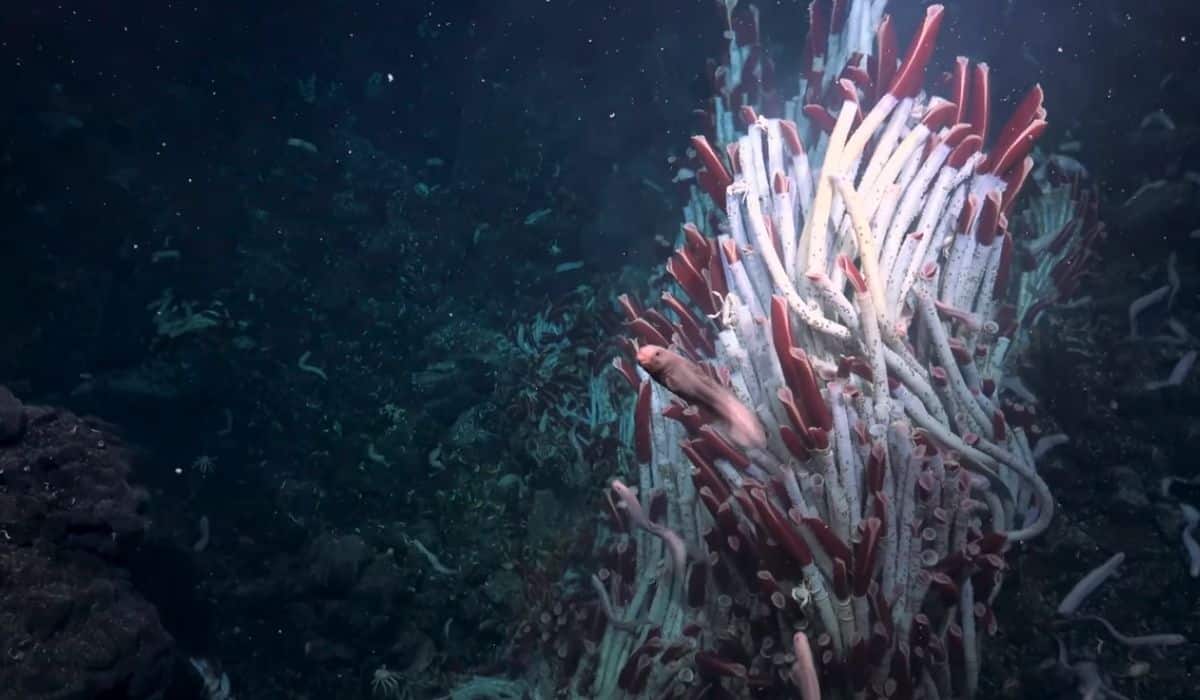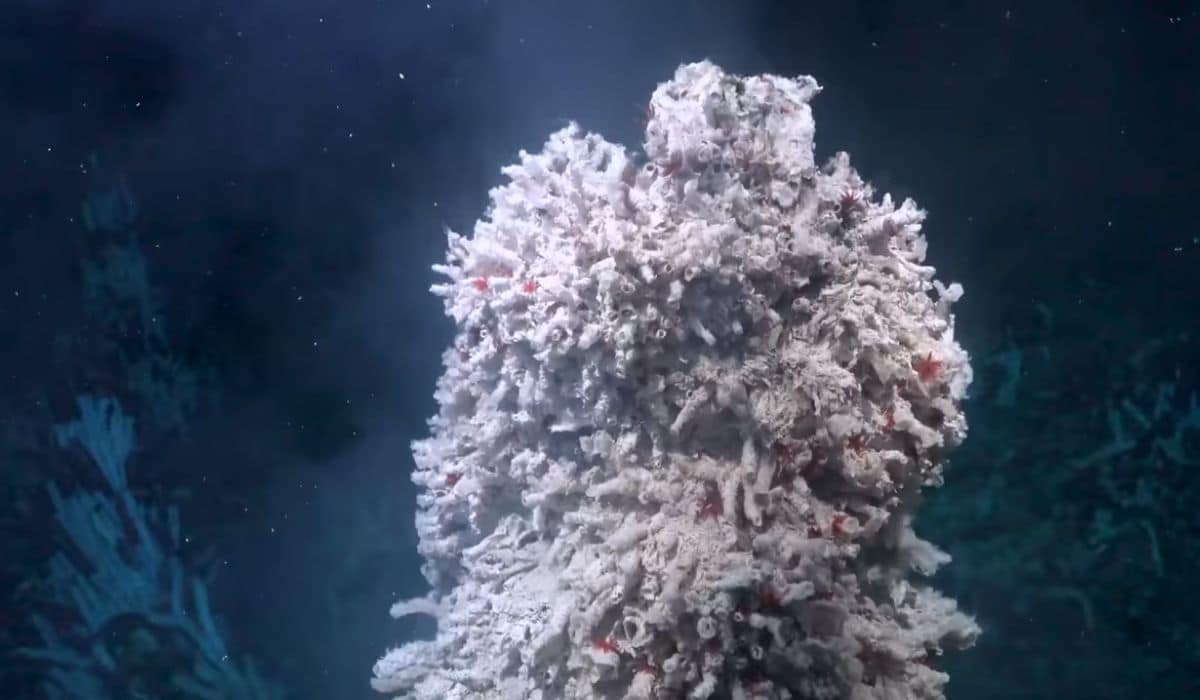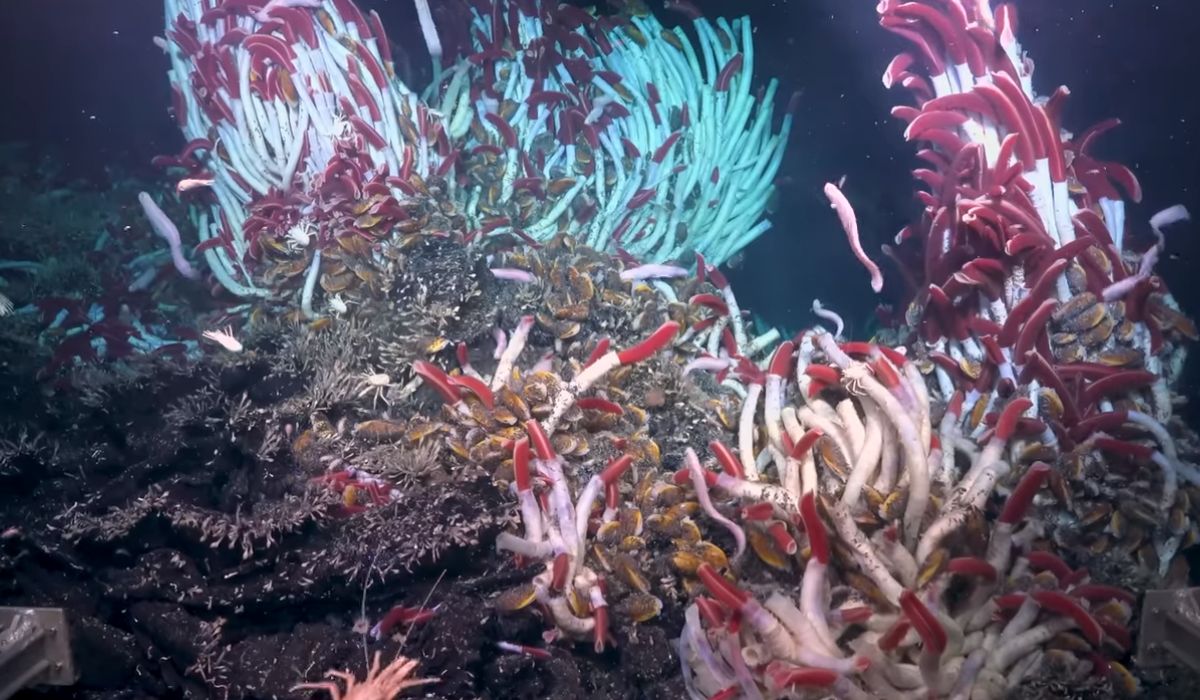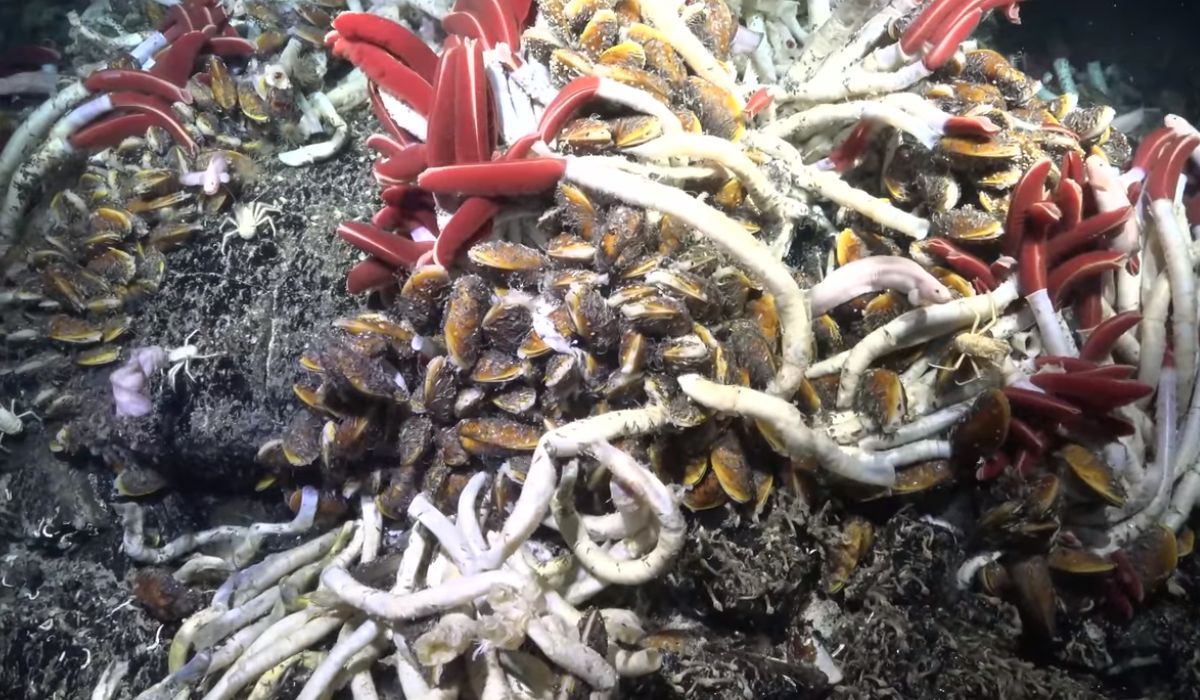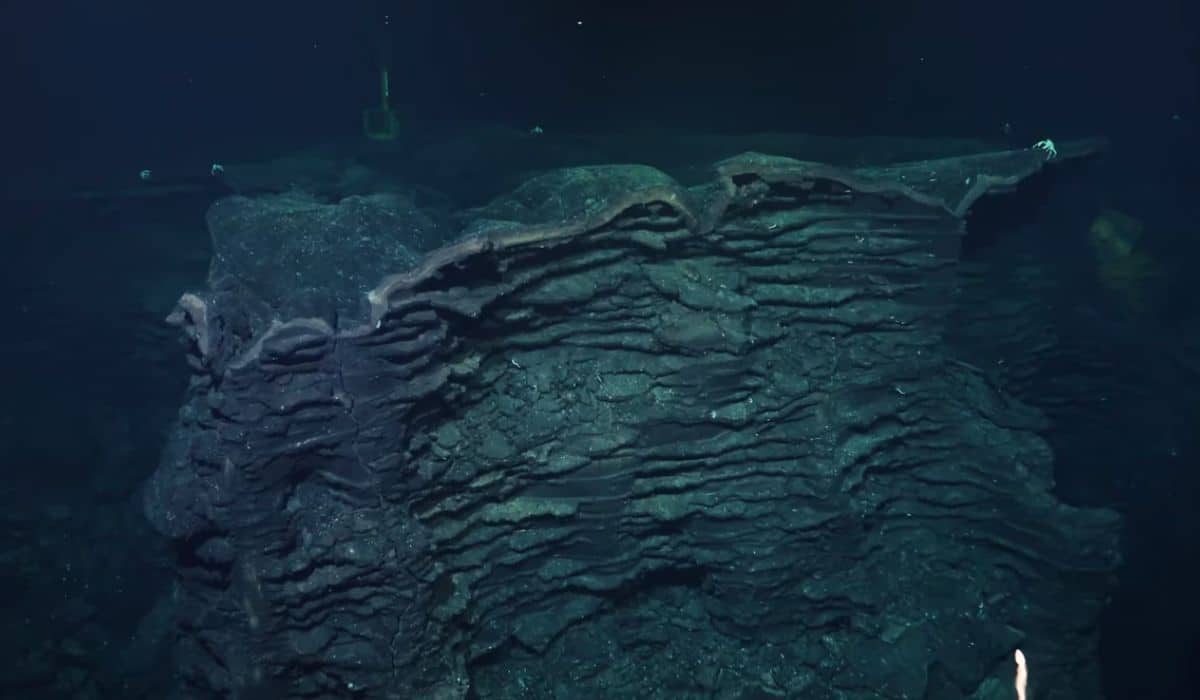Unraveling a mystery, scientists continue to unveil new aspects of life on Earth.
In a recent deep-sea expedition, aquanauts from the Schmidt Ocean Institute utilized an underwater robot to explore beneath volcanic crusts in the Pacific’s depths. To their astonishment, beneath this well-documented seafloor, they stumbled upon a network of fluid-filled veins teeming with previously unknown life forms.
Imagine finding an entirely undiscovered world right under our noses!
Jyotika Virmani, the institute’s executive director, draws a comparison, “We’ve always known about animals residing in underground nooks on land, and those inhabiting oceanic sand and mud. But this is our maiden journey beneath hydrothermal vents.”
She continues, “Discovering such a novel ecosystem, tucked away under an already fascinating one, reiterates the wonders of life and its capacity to thrive in the most unexpected corners.
The depths of our oceans have always been a source of fascination, and hydrothermal vents, discovered only in the 1970s, added to that allure. These vents, spewing hot, mineral-rich waters, surprisingly hosted a vibrant ecosystem despite the surrounding deep-sea darkness.
Yet, for over four decades, scientists, engrossed by the thriving life around these vents, never ventured below these underwater hot springs. But now, peeling away the seafloor’s exterior, they’ve unveiled an enchanting world. This realm, bursting with hues, is home to worms, snails, and unique bacteria. Interestingly, these bacteria don’t draw energy from sunlight but from the very minerals around them. What a marvel.
Ecologist Monika Bright from the University of Vienna shared an exciting insight, saying, “This discovery has truly broadened our knowledge of deep-sea hydrothermal vent ecosystems. It’s fascinating how two vibrant habitats coexist— one above and one beneath the vent’s surface. Both communities rely on each other, with the ones below drawing from the vent fluid and the ones above benefiting from the seawater’s oxygen.
The tubeworms from the deep-sea have caught the attention of scientists. It appears these intriguing creatures navigate through volcanic fluids beneath the seafloor to find and settle in new areas. This might be the reason we rarely spot their young near deep volcanic openings – they’re likely growing up hidden below the surface.
To put this theory to the test, a team of researchers used a remotely operated vehicle named SuBastian to clear a patch of the ocean floor located on the East Pacific Rise near Central America, about 2,500 meters deep. After clearing, they secured a mesh box over this cleared site. Just a few days later, when they lifted the box, they discovered new creatures had settled in. It’s believed these new inhabitants traveled from the numerous cracks and crevices below the seafloor.
The findings from this research are set to be published in the upcoming months. If they hold up, then any future deep-sea mining activities could significantly disrupt this newly discovered ecosystem.
Every expedition by the Schmidt Ocean Institute highlights the pressing need to explore our oceans more deeply,” says Wendy Schmidt, the Institute’s president and co-founder. “Finding new creatures and landscapes, and now, uncovering an entirely new ecosystem, just goes to show how much remains unknown about our oceans. It emphasizes the importance of safeguarding what we’re still trying to understand.


